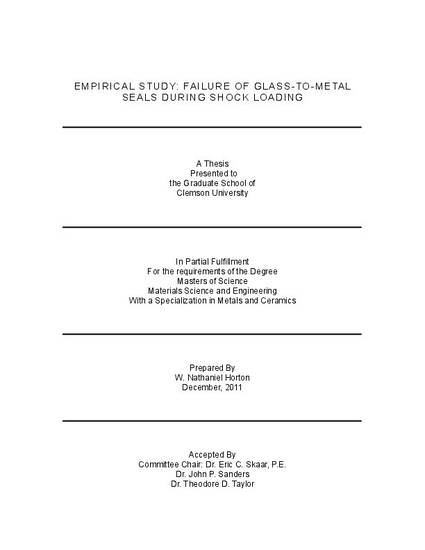
The goal of this thesis was to determine the empirical failure mechanisms and sequence of cartridge actuated devices (CADs) experiencing failure of the glass-to-metal (G/M) seal. Impact loading was conducted with a drop weight machine at room temperature and 300¡F, and then empirically analyzed with high speed video. Resulting peak overload force, shear stress, and impulse were all calculated. The room temperature samples were found to absorb twice the impulse upon failure as the elevated temperature G/M seals. Closed-form and three-dimensional finite element analysis was used to determine the stress state and deformation upon loading. Furthermore, high speed data was collected for shock load detonation events to document the failure sequence of a G/M seal under such loading. The shock overload event was found to last 0.82 µsec and propel an electrical feed-through-pin at a terminal velocity of 955 m/s. The core of a multiple pin G/M seal design was found to experience large accumulations of principal stress and deformation during pressure loading of the interior face. High speed video data discovered the G/M seal failed along the glass-to-pin interface during shock overload failure. Overall, this thesis provided definition of failure sequence and highlighted problematic structural areas, as well as design weaknesses for construction of G/M seals.
Available at: http://works.bepress.com/nathaniel_horton/1/